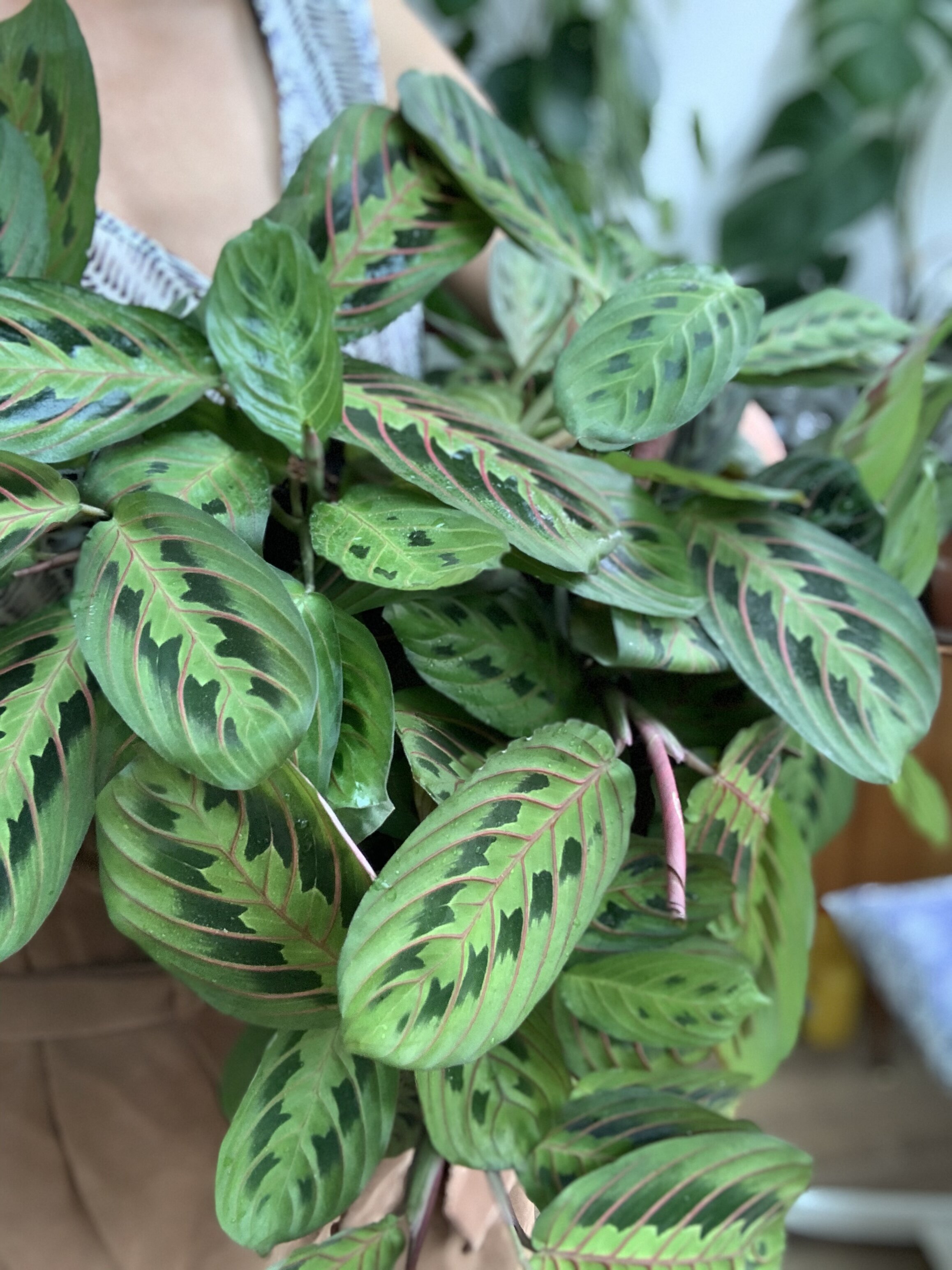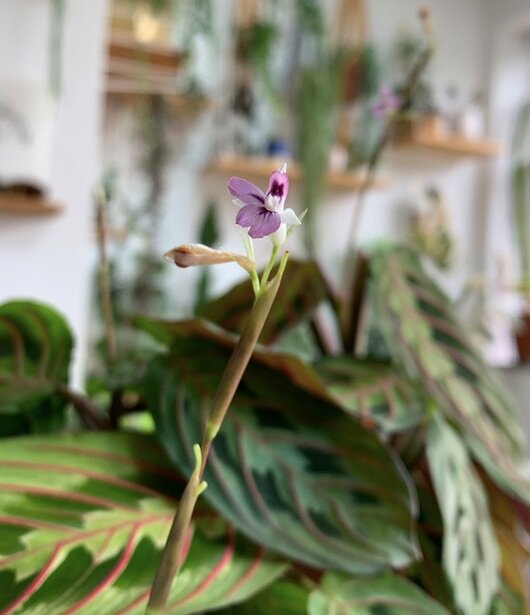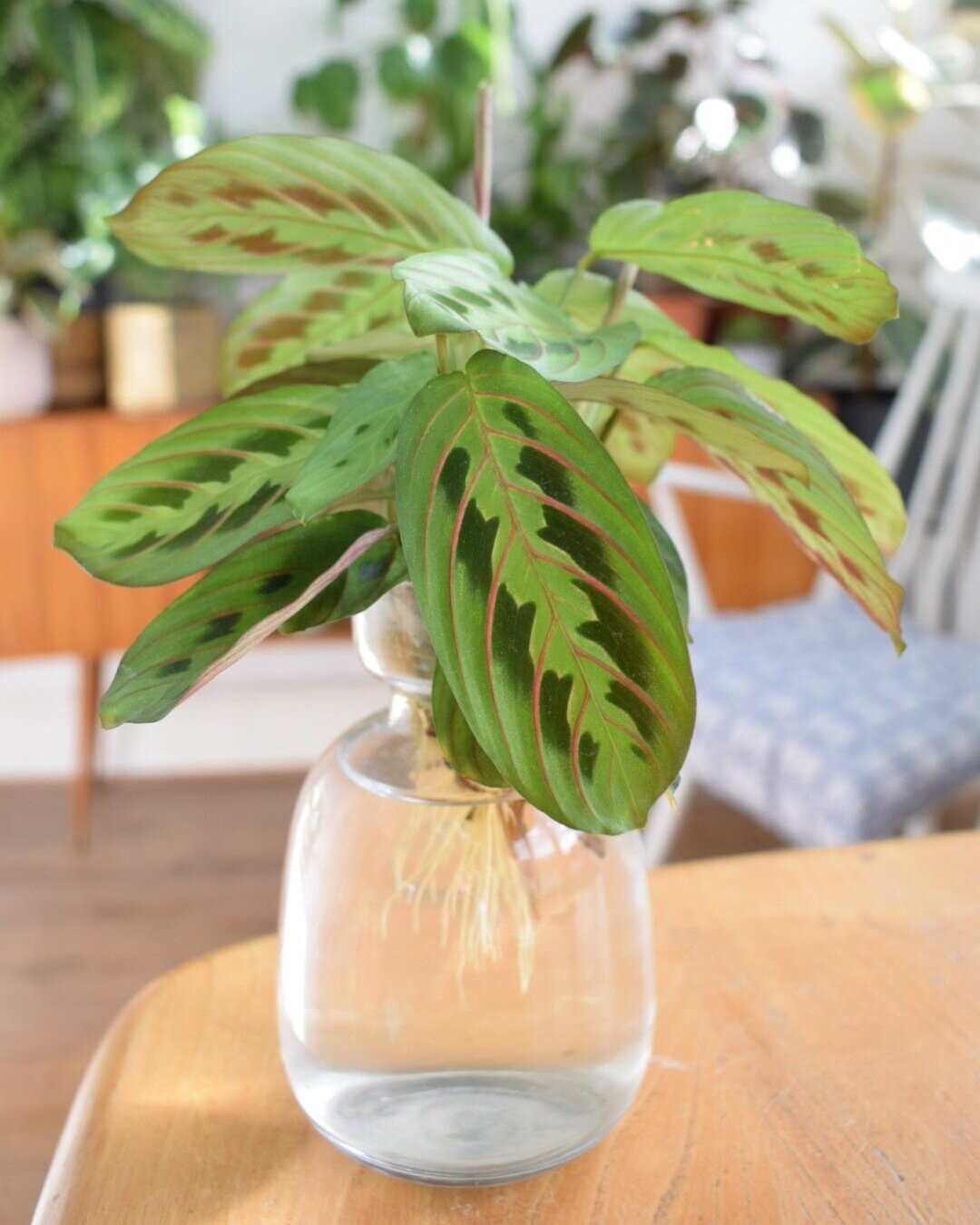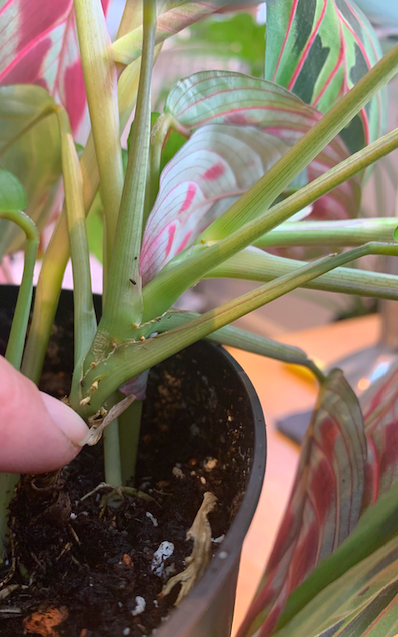We love the plants within the Maranta family for many reasons, from the wonderful leaf patterning, to its prayer-like movements and ease of propagation.
Calathea, Stromanthe and Ctenanthe are also part of the Maranta group, however this plant profile will focus on the Maranta leuconeura.
Maranta leuconeura tricolour
I have many Maranta leuconeura tricolour all propagated from the mother plant, I find them very easy to look after, and pretty forgiving (unlike their rather more demanding Calathea relatives). I have moved several of them to the bathroom and out of a bright south-facing room which was too hot and dry for the Maranta, Calathea and Ctenanthe that I own.
Native habitat
Maranta are native to tropical forests in Central and South America, they sprawl along the forest floor thriving in warm, moist and humid conditions. Their sprawling nature means these plants will grow wide rather than tall, and will also work well in hanging pots.
Light
Maranta will grow very well in bright indirect light, but they are also tolerant of lower light areas, owing to their native forest floor habitat. Too much direct sun light will result in rather washed out leaves and brown tips. Too little light and the plant growth will slow and leaves may become yellow.
Water
Maranta will not like to dry out completely, they should be watered once the top couple of centimetres of the soil is starting to dry. However, they will not like to be sitting for a prolonged time in water, so I always take mine to the sink and give them a good drenching, allowing the water to drain away completely before placing back into the decorative pot.
Maranta and particularly Calathea will prefer room temperature filtered water or rain water rather than the chemically treated tap water we have. If you are unable to collect rainwater, using Liquid Gold Leaf fertiliser in tap water is a great alternative as it dechlorinates the water.
Having said Maranta will not like to dry out, several times I have neglected to water mine resulting in an almost completely dead-looking plant. I find them quite miraculous in that I cut back all the dead leaves leaving just a few stems and with regular watering (and feeding in summer) they very quickly bounce back producing many new leaves.
I water mine every week in summer and then every 2-3 weeks in winter.
Humidity
As we know Maranta and their relatives come from a humid habitat, so it is best to try and replicate this in our homes. A bright bathroom is an ideal spot for Maranta, Calathea and Ctenanthe due to the warm humid conditions.
A humidifier can be used to increase the ambient humidity around the plant. You can also try sitting the pot on stones within a tray of water. As the water evaporates this will increase the humidity slightly. Be careful not to let the pot sit in the water itself which can lead to root rot. Misting the plant will have little effect in raising the humidity around the plant.
The famous prayer-like movement
One of the things that makes these plants so popular is the way they move daily in reaction to the change from daylight to nighttime. This movement is called nyctinastic movement. As daylight wanes and darker light falls the leaves move from their resting downward position in daylight to a near vertical position at nighttime, like hands raising in prayer.
Soil
Maranta will be happy in a general houseplant compost with added perlite to aid drainage.
Re-potting
Maranta don’t tend to require re-potting particularly often. I only repot mine when I see roots growing out of the bottom of the pot. It is always best to re-pot in spring when the plant is actively growing.
As Maranta tend to sprawl rather than growing tall they do not need very deep pots, they can be happy in shallower pots.
Fertiliser
As with many houseplants, Maranta will benefit from being fed every couple of weeks in spring and summer. We would always recommend Liquid Gold Leaf.
Flowers
A happy Maranta will produce pretty delicate flowers through the summer. They have rather a long flower stem with a few small flowers on top. Bright (but indirect) light and regular feeding throughout spring and summer should help to encourage flowering.
Toxicity
Maranta and Calathea are not toxic so are classed as pet and child safe.
Propagation
It is very easy to propagate Maranta plants. There are two main methods; division or water propagation.
Root growth on water propagated Maranta
Dividing a Maranta plant is best done when repotting as you can easily see where the plant can be pulled at its base to divide it. The divided plant can then simply be potted.
Water propagation is perhaps a bit more satisfying as you get to see the new roots growing.
Step 1:
Using clean sterilised scissors or a knife, cut the stem below a node. You can see the nodes on the stem, they are the nobbly section where leaves come from, this is where the new roots will grow from.
Where to cut a Maranta stem for water propagation
Step 2:
Simply place the cutting into a small clear vase of water, making sure the leaves are not submerged. Be sure to change the water once a week to keep it clean and clear.
Step 3:
Watch the roots grow! After a couple of weeks roots will appear.
Step4:
Once the roots have grown about an inch (and ideally have secondary roots growing out of the initial roots) you are ready to simply pot into the compost mix described above.





